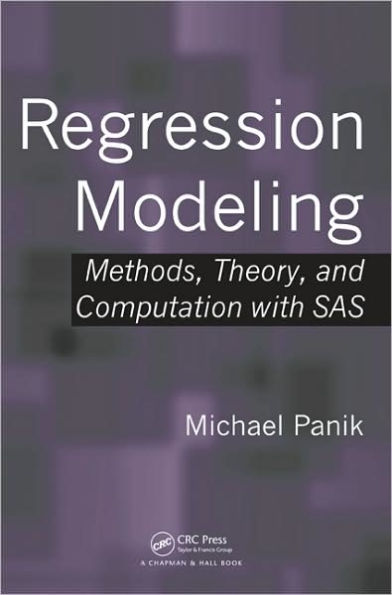The text presents the popular ordinary least squares (OLS) approach before introducing many alternative regression methods. It covers nonparametric regression, logistic regression (including Poisson regression), Bayesian regression, robust regression, fuzzy regression, random coefficients regression, L1 and q-quantile regression, regression in a spatial domain, ridge regression, semiparametric regression, nonlinear least squares, and time-series regression issues. For most of the regression methods, the author includes SAS procedure code, enabling readers to promptly perform their own regression runs.
A Comprehensive, Accessible Source on Regression Methodology and Modeling
Requiring only basic knowledge of statistics and calculus, this book discusses how to use regression analysis for decision making and problem solving. It shows readers the power and diversity of regression techniques without overwhelming them with calculations.
The text presents the popular ordinary least squares (OLS) approach before introducing many alternative regression methods. It covers nonparametric regression, logistic regression (including Poisson regression), Bayesian regression, robust regression, fuzzy regression, random coefficients regression, L1 and q-quantile regression, regression in a spatial domain, ridge regression, semiparametric regression, nonlinear least squares, and time-series regression issues. For most of the regression methods, the author includes SAS procedure code, enabling readers to promptly perform their own regression runs.
A Comprehensive, Accessible Source on Regression Methodology and Modeling
Requiring only basic knowledge of statistics and calculus, this book discusses how to use regression analysis for decision making and problem solving. It shows readers the power and diversity of regression techniques without overwhelming them with calculations.

Regression Modeling: Methods, Theory, and Computation with SAS
830
Regression Modeling: Methods, Theory, and Computation with SAS
830Hardcover(New Edition)

Product Details
| ISBN-13: | 9781420091977 |
|---|---|
| Publisher: | Taylor & Francis |
| Publication date: | 04/30/2009 |
| Edition description: | New Edition |
| Pages: | 830 |
| Product dimensions: | 7.20(w) x 10.10(h) x 1.70(d) |
